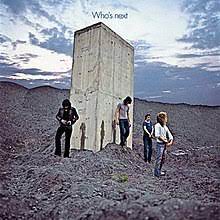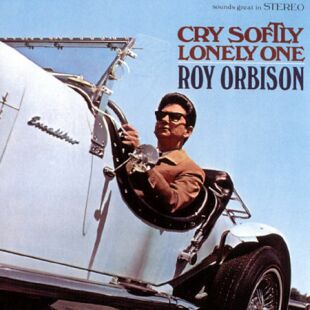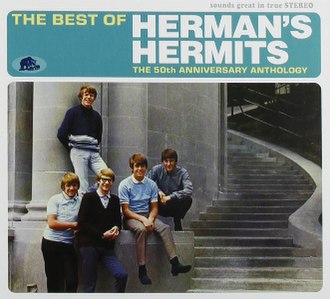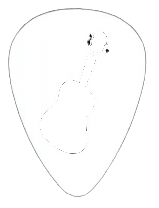Best Neil Sedaka Songs to Play on Acoustic Guitar
Neil Sedaka wrote some of the most catchy pop hits of the late '50s and early '60s.

His songs are full of upbeat rhythms, sweet melodies, and simple chord progressions that sound great on acoustic guitar.
On this page, you’ll find six of his best-known songs, complete with chords, strumming tips, and demo videos.
Whether you're a beginner or brushing up on the classics, these lessons are a fun way to play along with music history.
🎸 Overview Video - “Watch This Preview of The Best Neil Sedaka Guitar Songs”
Neil Sedaka Guitar List
1. Breaking Up Is Hard To Do2. Calendar Girl
3. Happy Birthday Sweet Sixteen
4. Laughter In The Rain
5. Next Door To An Angel
6. What A Surprise
1. Breaking Up Is Hard To Do - Learn To Play On Guitar

Breaking Up Is Hard To Do was co-written by Neil Sedaka and Howard Greenfield in 1962 and became one of Sedaka's signature hits.
Released as both an upbeat doo-wop tune and later as a slow ballad, it captures the pain of heartbreak with its iconic chorus. The song reached No. 1 on the US Billboard Hot 100 and became an anthem for those going through breakups.
Sedaka's 1975 disco-inspired re-release also charted at
No. 8. Covered by artists like The Carpenters and Lenny Welch, it
remains a classic, frequently featured in movies, TV shows, and on the
radio.
Chords And Strumming
For this one play a down down up down down up down up and repeat rhythm pattern in standard tuning. Some lead required here with the chords G, Em, C, D, D7, B7, A7, Gm, Fmaj7, Fm, A# and D#.
Guitar Lesson Details - (chords & lyrics sheet incl with lesson)
Back To Song List
2. Calendar Girl - Learn To Play On Guitar
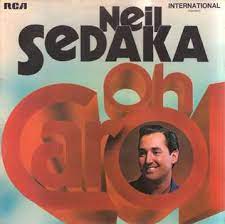
Calendar Girl was a collaboration by Neil Sedaka and Howard Greenfield in 1960 and became a hit, reaching No. 4 on the US Billboard Hot 100.
Known for its lively tempo and catchy melody, the song captures the excitement of young love as the singer compares his beloved to a "calendar girl," someone he adores every month.
This early pop classic highlights Sedaka's distinctive tenor and became one of his memorable hits, alongside "Happy Birthday Sweet Sixteen" and "Breaking Up Is Hard to Do."
Featured in various films and TV shows, it remains a fan favorite and has been widely covered over the years.
Chords And Strumming
I like to play a drop D tuning here with some lead while playing the chords D, Bm, G, A7, Ddim and B7. For rhythm play a down up down up with some walking bass blended into the rhythm.
Guitar Lesson Details - (chords & lyrics sheet incl with lesson)
Back To Song List
3. Happy Birthday Sweet Sixteen - Learn To Play On Guitar

Happy Birthday Sweet 16 was released in 1961and was co-written by Neil Sedaka and Howard Greenfield.
Sedaka, then a high school friend of Carole King, created a catchy, celebratory tune perfect for birthdays. The song, reminiscent of King's hits "Take Good Care of My Baby" and "One Fine Day," tells of a young man's love for a girl turning sixteen. It reached No. 6 on the US Billboard Hot 100 and No. 3 in the UK.
This early pop classic showcases Sedaka's distinctive tenor and became a staple for birthday celebrations, later covered by artists like Connie Francis and The Crests.
Chords And Strumming
For this one play a down down up down up down up and repeat in standard tuning and be prepared for some lead work. Use the chords G, Em, Am, D7, B7, G7, Edim, E7, C and an E7.
Guitar Lesson Details - (chords & lyrics sheet incl with lesson)
Back To Song List
4. Laughter In The Rain - Learn To Play On Guitar
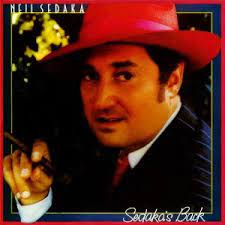
Laughter In The Rain written by Neil Sedaka and Phil Cody, became a major comeback hit for Sedaka in 1974, reaching No. 1 on the US Billboard Hot 100.
Originally released by Lea Roberts, Sedaka asked Elton John's label, Rocket Records, to prioritize his version, believing it would be a hit. The song, with its catchy melody and romantic lyrics, tells of a man reminiscing about a rainy-night encounter that still brings him joy.
Sedaka’s version, known for its lush orchestration, won a Grammy for Best Male Pop Vocal Performance in 1975 and remains his definitive version. Notably, Cody wrote the lyrics in just five minutes after a nap under a tree.
Chords And Strumming
I play a capo 3rd fret on this one in standard tuning while playing a root down up down up root up down up and repeat rhythm pattern. Some picking required with the chords D, Gmaj7, A7sus, A7, Bm, Esus, E, Gm, C, Fmaj7, Dm, A# and a Dmaj7.
Guitar Lesson Details - (chords & lyrics sheet incl with lesson)
Back To Song List
5. Next Door To An Angel - Learn To Play On Guitar

Next Door to an Angel is from Neil Sedaka and Howard Greenfield, and recorded by Sedaka in 1962. The song was released as a single and became a hit, peaking at No. 5 on the US Billboard Hot 100 chart.
"Next Door to an Angel" tells the story of a teenage boy who has a crush on a girl who lives next door. The boy dreams of being with her and imagines what it would be like to be her boyfriend. The song has a sweet and innocent feel that captures the essence of young love.
"Next Door to an Angel" was one of several hits that Sedaka had in the early 1960s, including "Calendar Girl," "Happy Birthday Sweet Sixteen," and "Breaking Up Is Hard to Do." The song remains a favorite among fans of Sedaka's music and is often included on compilations of his greatest hits.
Chords And Strumming
For rhythm here you'll play a root down up root up down up pattern with the chords G, Em, Am, D7, E7, Adim, Dm7, G7 and a Cmaj7. No lead in this one played in standard tuning and I'm playing a capo 2nd fret.
Guitar Lesson Details - (chords & lyrics sheet incl with lesson)
Back To Song List
6. What A Surprise - Learn To Play On Guitar

What a Surprise is from his 1978 album "All You Need Is Music."
"What a Surprise" is a mid-tempo pop song that features Sedaka's trademark catchy melody and upbeat lyrics. In the song, Sedaka sings about unexpectedly falling in love and being surprised by his feelings.
The song was not released as a single, but it remains a favorite among fans of Sedaka's music.
There was also no music video released for this song.
Chords And Strumming
This has a root down up down up down up and repeat rhythm pattern with some walking bass in the chorus. A bit of lead in here with the chords D, F, Em, A, D7 and a G played in standard tuning and a capo 1st fret for the original key.
Guitar Lesson Details - (chords & lyrics sheet incl with lesson)
Back To Song List
If you love the catchy charm of Neil Sedaka’s music, these guitar lessons are a great way to bring his timeless hits to life. Each song offers something fun and unique, from upbeat strumming patterns to sweet chord progressions that are easy to learn.
Be sure to check out the full tutorials if you’d like extra help with rhythms, chord changes, and playing along with the demos. And if you enjoy this page, don’t miss our other great lessons from the golden age of pop!
If you liked this best Neil Sedaka guitar songs page you might also like ... (click images)
Home Page
Popular Songs From The 60s
